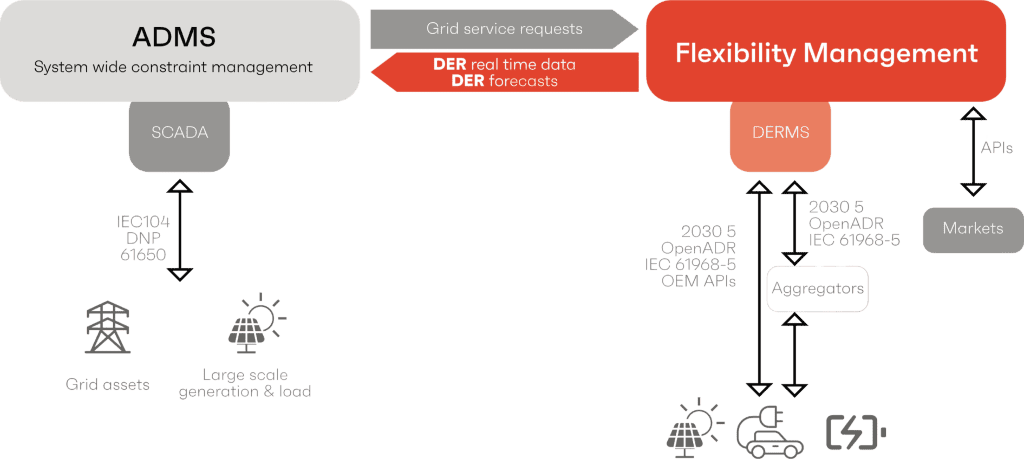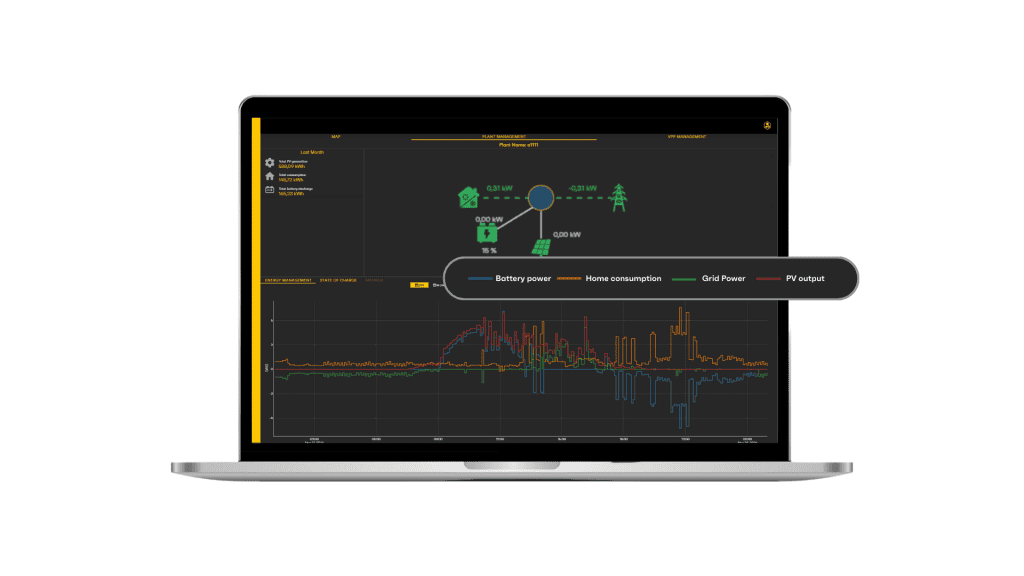In the past decade, with the growing penetration of renewable energy sources, the electricity market in Europe has undergone a significant transformation. This has placed considerable pressure on both regulators and network distributors to adopt an orchestration method capable of maintaining the security of the energy supply and managing bi-directional power flows effectively.
In response to these rapid changes on the energy landscape, the EU enacted Directive 2019/944, ushering in a new era of energy market regulation. This directive set the stage for sweeping changes across member states, challenging regulators and industry players to adapt swiftly to the shifting paradigm of renewable energy integration.
It’s no surprise that National Regulators are taking different approaches to managing peak loads in the distribution grid. After all, the energy transition is unlike anything we’ve seen before, there’s no set playbook for legislators and operators alike. There’s only one thing we can be sure here, without smarter grid operations that allow the efficient management of flexible loads, electricity grids risk becoming the bottleneck for the entire energy transition.
Against this backdrop, Germany and the Netherlands stand out with their bold reform initiatives in energy market regulation. While each country approaches the task with its unique strategies, both share a common goal: to harness the potential of renewable energy while ensuring grid stability and security of supply.
As these nations forge ahead with their regulatory reforms, the eyes of the energy world are fixed firmly upon them, eager to glean insights and lessons for navigating the complexities of the energy transition.
Netherland’s Energy Safety Amendment
In the Netherlands, certain segments of the grid are feeling the squeeze, with congestion reaching levels so critical that distribution operators are hitting the brakes on new connections. To ease the strain on distribution grids, the Dutch regulator ACM has floated an intriguing proposal: establishing long-term contracts between operators and network users.
The gist? Operators could signal a reduction in a user’s connection capacity a day in advance, just before the day-ahead market closes. Initially aimed at larger consumers surpassing the 1MW mark, this approach could eventually extend to smaller residential customers.
This “one-day-ahead congestion solving” could offer a win-win scenario. By not constraining network capacity when congestion isn’t an issue, users gain more predictability in scheduling flexible loads. They can factor in network capacity limits when making trading decisions across both day-ahead and intraday markets.
Another idea making the rounds for the next round of network tariffs in the Netherlands is the static capacity subscription model. Here, users commit to a fixed network capacity outlined in their contract. Should they exceed this capacity, they’d face substantially higher charges. This setup ensures guaranteed availability of subscribed capacity, except in rare cases of unforeseen outages.
While this approach offers the certainty of maintaining network capacity at 100%, it also runs the risk of perpetuating under-utilisation if customers must adhere to a fixed tariff calculated for peak consumption times.
Germany’s Paragraph 14a Amendment
Germany’s National Regulator decided to take the road less travelled by, opting for near real-time interruptible connections. With this amendment, grid operators now hold the reins over what they call ‘fully interruptible consumption devices’ in the low-voltage grids, giving them the power to ease the grid’s burden during peak demand. In return, they’re promising a quicker connection for distributed energy resources, while customers can look forward to more wallet-friendly grid fees. It’s a bit like a strategic dance-off, with electricity calling the shots!
The successful implementation of this amendment demands an urgent and substantial enhancement of grid operators’ capabilities. Why? Well, to handle new connection requests immediately, predict low voltage traffic jams, and juggle flexible energy resources to match demand. It’s like a high stake balancing act, but with kilowatts instead of tightropes!
As of January 1st, 2024, all eyes are set on newly installed systems, making sure they toe the line outlined in paragraph 14a. Meanwhile grid operators must adapt to a new way of working, where rejecting a new asset is officially off the table. It’s a game-changer, pushing them to be swift and savvy in handling the ever-growing demands of the network.
The AI Path to the Energy Transition
The operation of distribution systems is witnessing a paradigm shift, with data-driven operation, management, and decision-making systems influencing both network operation and planning, as well as flexible load management.
At the core of this transformation lies the utilisation of robust data to inform the development and operation of digital twins, which serve as virtual replicas of physical systems. However, merely amassing vast quantities of data is insufficient; it is the extraction of actionable insights from this data that holds the key to optimising distribution grid operations.

Data serves as the foundation of network management systems based on digital twins. Distribution network operators usually have invested a lot of time and resources into different software and hardware solutions that help bring insights into the network’s state, but these are often stored in silos.
In the evolving landscape of distribution systems, the necessity of near real-time – and long-term congestion forecasting capabilities as well as capabilities to orchestrate flexible loads and activate market options during periods of high demand is becoming increasingly paramount. This imperative cannot be undertaken without large amounts of data collected, organised and analyzed in real-time.
By effectively managing flexible loads and leveraging market mechanisms, distribution systems can mitigate the risk of supply shortages and maintain grid stability during peak usage periods. Such proactive measures are essential for optimizing grid performance and ensuring reliable energy delivery to consumers amidst fluctuating demand patterns.

Implementing such software-driven control mechanisms aligns seamlessly with the regulatory reforms discussed earlier. With directives emphasizing the need for grid operators to enhance flexibility and manage demand more effectively, these technological solutions serve as practical manifestations of regulatory objectives. By harnessing software to orchestrate flexible loads and activate market options, operators can navigate the complexities of modern energy landscapes with agility and precision, all while ensuring compliance with evolving regulatory frameworks.
Embracing these cutting-edge solutions, distribution grids can adapt dynamically to meet the evolving demands of customers while paving the way for a more resilient and sustainable energy future. Through collaboration between industry stakeholders and forward-thinking regulation, we can unlock the full potential of innovation to create a brighter energy landscape for generations to come.

Co-written by Pär Schröder.


